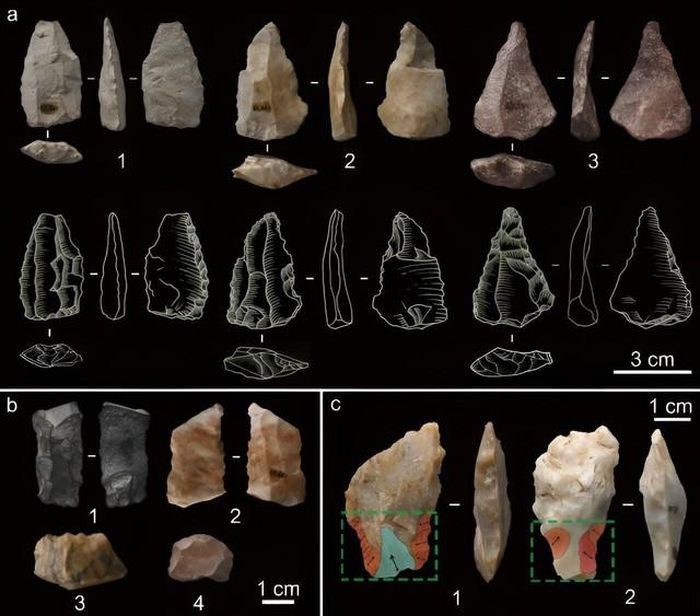This is an unparalleled treasure that provides unprecedented insights into a crucial period of Homo sapiens.
A large research team from China, Australia, France, Spain, and Germany has collaborated to analyze one of humanity’s most significant treasures, which has come to light thanks to numerous excavations in Shanxi Province, China, over the past six decades.

Some artifacts from the unparalleled archaeological treasure excavated in Shanxi Province, China – (Photo: IVPP)
According to the research cited in the scientific journal PHYS, this discovery has unveiled an unprecedented trove of cultural and technological innovations from the Paleolithic era.
Dating back up to 45,000 years, this also represents the oldest evidence of the presence of Homo sapiens across the entire East Asian region.
The findings began with three animal bone specimens excavated in 1963 at the Shiyu site in Northeast Shanxi Province, China.
Subsequent analyses proved that these were human-made tools, intentionally crafted between 45,800 and 43,200 years ago.
Further excavations subsequently brought forth a remarkable array of artifacts to the modern world.
These artifacts showcase various technologies for crafting blades, long-distance transportation of obsidian, perforated graphite disks, weaponry technology, and more, according to Associate Professor Yang Shixia from the Institute of Vertebrate Paleontology and Paleoanthropology (IVPP) at the Chinese Academy of Sciences (CAS).
“The unique collection of stone tools, combined with graphite disks and bone tools, demonstrates that early peoples had a rich culture,” the authors concluded.
Moreover, the long-distance transportation of obsidian indicates that even in those early times, the people living in ancient China began developing long-distance resource procurement and complex transportation systems…
Clearly, this marks a leap forward in the technology and civilization of humanity. These findings also significantly complicate long-standing understandings of the global expansion of Homo sapiens.
This research has just been published in the scientific journal Nature Ecology & Evolution.


















































